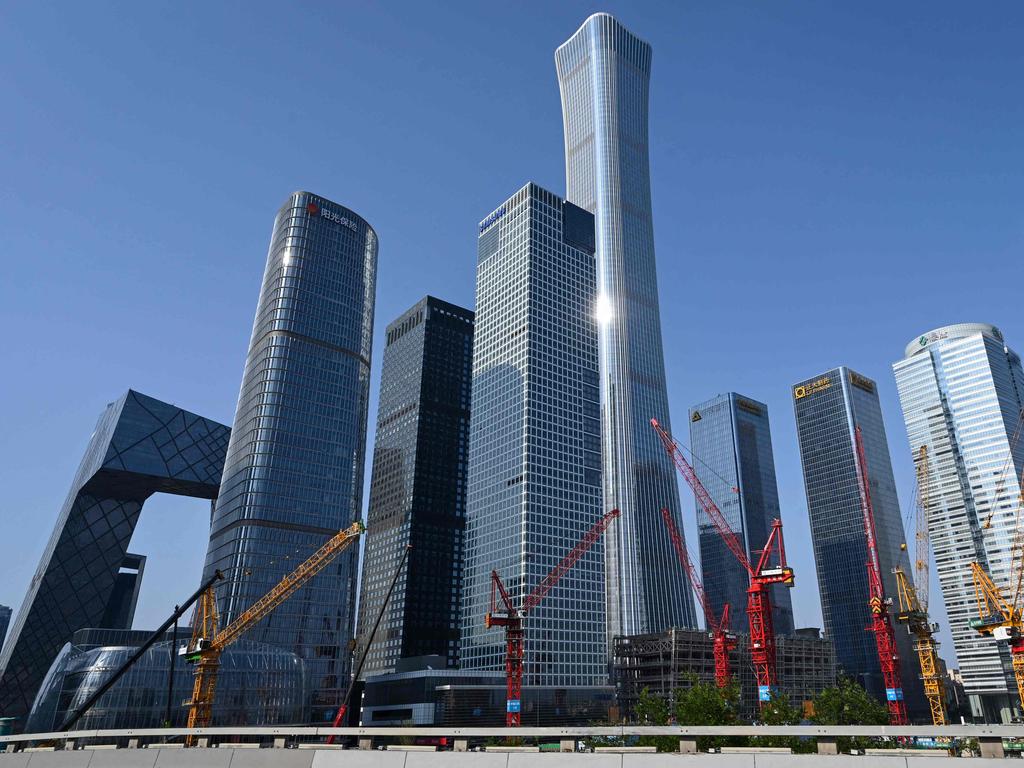‘Contagion’: Inside China’s $4.5 trillion ‘shadow’ banking crisis
China’s ‘shadow bank’ sector is on the brink of a potential $4.5 trillion disaster. And the rest of the world could be exposed.
Unemployment is up. Investment is down. Households aren’t spending. Factory output is falling. And the real estate market is in crisis. Teetering behind it all is China’s “shadow bank” sector.
It’s a $4.5 trillion loan industry. And it is struggling to cope with deliberately induced financial distress.
Shadow lenders aren’t unique to China. These trusts are an essential means worldwide for start-ups and small to medium enterprises to take the necessary risks to break into new markets. That’s because they’re not subject to the same levels of regulation as regular banks.
And they’ve played a particularly significant role in China’s “economic miracle”.
But the bubble of easy money has burst.

Beijing introduced new rules last year to restrain the sector’s predatory lending practices.
As a result, some shadow banks have already failed. Others risk dramatic losses. And that’s driving international fears that a Chinese financial crisis is looming.
One of China’s oldest shadow banks – Xinhua Trust – was declared bankrupt in May. This went against expectations that Beijing would back its liabilities.
“The bankruptcy of Xinhua Trust is a reflection of the survival of the fittest in the market and will be conducive to the healthy development of the industry in the long run,” the state-run Economic Information Daily commented at the time.
Another liquidity “weakling”, Zhongrong, is now on its knees after missing payments to its 150,000 investors.
It’s one of China’s largest trusts, responsible for $136 billion of client investments.
In total, China’s shadow banking sector manages about $4.5 trillion.
“The risk of contagion is high because lending by trusts is ubiquitous and opaque, and investment in them produces tangled ties,” a recent analysis in The Economist concludes. “They have also lent to local government projects — and now cities and provinces across China are struggling to repay debts, which are estimated to have hit $12 trillion at the end of 2022.”
What remains to be seen is how exposed the rest of the world’s shadow banking system is to this expanding Chinese debt trap.
What is shadow banking?
Shadow bankers channel funds to businesses unable to convince traditional banks they’re a worthwhile investment.
It’s a high-cost alternative. But, the associated promise of high returns can be attractive to investors and borrowers alike. Especially if the rewards appear worthwhile.
In China, that’s led to some risky behaviours becoming entrenched.
Individuals and state-owned businesses have been borrowing from state-owned banks at artificially low-interest rates set by Beijing, not an independent regulator.
These borrowers then re-lend the money to private trusts at a higher interest rate. And those private trusts then act as “shadow banks”, on-lending at even higher rates to more speculative sectors of the economy – such as real estate and infrastructure.

It’s been a particularly lucrative money-making exercise over the past 30 years.
China’s extraordinary growth saw shadow banks offering returns of up to 10 per cent per annum. Over-excited provinces and developers saw their interest rates as no obstacle to the high-turnover returns of the property market.
The implications of this were recognised as early as 2015 by the Lowy Institute’s Dr Stephen Grenville.
“The shadow banking sector’s proclivity for excess and mindlessly low credit standards (also demonstrated in America and Europe in the period leading up to the 2008 crisis) needs to be reined in while at the same time retaining the dynamism and flexibility,” he wrote. “In China, deregulation is taking place in a carefully staged fashion. But policymakers can make mistakes. Markets can lose confidence, and growth can be knocked off trend.”
Mistakes have since been made.
Confidence has been lost.
“As Chinese leadership attempts to solve the issue of predatory loans that have left the economy with dangerously high levels of credit risk, they are pushing shadow banks out of the market and severing financial access for a significant portion of the population,” argues Johns Hopinks University economist Ben Phillips in The Diplomat.
Domino effect
Once China’s massive national property developers began to default on loan repayments last year, regional governments began freezing their funds.
Their motives were sound.
They wanted to guarantee building projects – already bought and paid for by Chinese families – were completed.
But that meant the cash stopped flowing back to shadow banks like Zhongrong. And the sector’s exposure to the property market is as high as 30 per cent.
That means shadow banks are now struggling to repay their own investors.
And those investors must still repay their – admittedly much cheaper – government loans.
“China’s regulatory constraints on shadow banks seem to work better in theory than practice,” argues Phillips.
Beijing’s intervention in shadow interest rates has reduced the market’s volatility. And it shields households and small businesses from predatory practices.
“(But) efforts to install debt guardrails that better protect Chinese citizens have instead cut off access to a vital source of financial relief for the very people Beijing seeks to protect,” he adds.

This is a particular problem in China.
Communist Party-controlled banks are eager to offer cheap loans to Communist Party-controlled enterprises. But not privately owned firms. And that’s why 32 per cent of all financing in China is now through the shadow bank system.
“The drastic uptick in dependence on shadow banking is a side-effect of the inequitable loan acquisition process deeply ingrained in China’s banking system,” says Phillips.
And these small to medium enterprises – the nation’s largest employers – were forced to take out even larger shadow loans under Beijing’s strict pandemic lockdowns.
“Regulatory tightening is contradicting Beijing’s efforts to safeguard domestic firms – especially since this crackdown is happening in the backdrop of Xi Jinping’s “common prosperity” initiative, where domestic SME development has become a critical component,” Phillips argues. “If China truly sees SMEs as a critical pillar in its efforts to generate a more inclusive, domestic-focused economy, it will have to rethink its current policy toward shadow banking.”






